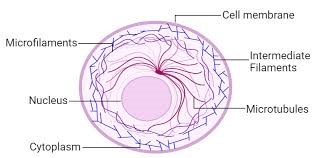Where in the cell does the Krebs' cycle take place?
Chloroplast.
Cytoplasm.
Mitochondrial matrix.
Nucleus.
Correct Answer : C
The Krebs cycle, also known as the citric acid cycle or tricarboxylic acid cycle, takes place in the mitochondrial matrix. Mitochondria are the powerhouses of the cell, responsible for generating ATP through aerobic respiration. The Krebs cycle is a key metabolic pathway occurring in the matrix of mitochondria, where acetyl-CoA molecules derived from the breakdown of carbohydrates, fats, and proteins are further oxidized to produce ATP, NADH, FADH2, and carbon dioxide. These energy-rich molecules serve as substrates for the electron transport chain, leading to the production of additional ATP molecules.
HESI A2 Exam Quiz Bank
TEAS 7 Exam Quiz Bank
Find More HESI Questions
HESI A2 Questions: We got the latest updated HESI A2 Questions
100% Money Refund: 100% money back guarantee if you take our full
assessment pass with 80% and fail the actual exam.
Live Tutoring: Fully customized live tutoring lessons.
Guaranteed A Grade: All students who use our services pass with 90%
guarantee.
Related Questions
Correct Answer is B
Explanation
Meiosis is a specialized type of cell division that produces gametes, the reproductive cells (sperm and eggs) in animals. During meiosis, a diploid cell undergoes two rounds of division, resulting in the formation of four haploid daughter cells. These haploid cells are the gametes, each containing half the number of chromosomes found in the original diploid cell. When gametes from two parents fuse during fertilization, they restore the diploid chromosome number in the resulting zygote. Thus, the product of meiosis in an animal cell is a gamete.
Correct Answer is A
Explanation
The cytoskeleton is critical to cellular motility, providing structural support and facilitating movement within the cell. It is a dynamic network of protein filaments and tubules that extend throughout the cytoplasm, giving the cell its shape, organizing its internal structure, and enabling various cellular processes. The cytoskeleton is involved in cell motility through the interaction of its components, such as actin filaments, microtubules, and intermediate filaments, with motor proteins that generate force and movement. Cytoskeletal elements are responsible for processes such as cell crawling, cell division, intracellular transport, and the maintenance of cell shape and integrity.

Correct Answer is B
Explanation
Strep throat is a bacterial infection caused by group A Streptococcus bacteria, specifically Streptococcus pyogenes. It is a common infection that affects the throat and tonsils, causing symptoms such as sore throat, fever, swollen lymph nodes, and difficulty swallowing. Strep throat is highly contagious and spreads through respiratory droplets when an infected person coughs or sneezes. It is typically treated with antibiotics to prevent complications and reduce the risk of spreading the infection to others. Other diseases caused by bacteria include tuberculosis, pneumonia, urinary tract infections, and bacterial meningitis.
Correct Answer is D
Explanation
DNA synthesis, or DNA replication, occurs during the S phase of the cell cycle. The cell cycle is the series of events that a cell undergoes as it grows and divides into two daughter cells. The S phase is the phase of DNA synthesis, during which the cell replicates its DNA to ensure that each daughter cell receives a complete set of genetic information. After DNA replication in the S phase, the cell proceeds to the G2 phase, where it prepares for cell division by checking for errors in DNA replication and synthesizing proteins necessary for mitosis or meiosis.
This question was extracted from the actual HESI A2 Exam. Ace your TEAS exam with the actual HESI A2 Exam questions, Start your journey with us today
Visit Naxlex, the Most Trusted HESI Prep Platform With Guaranteed Pass of 90%.
Money back guarantee if you use our service and fail the actual exam. Option of personalised live tutor on your area of weakness.
